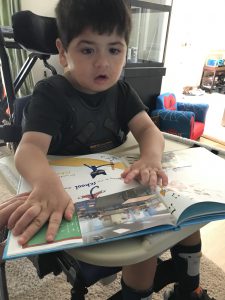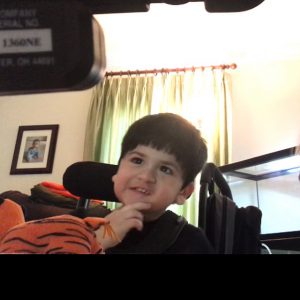 Now that Joey is in kindergarten, it is time for him to begin to learn to recognize some high frequency or sight words. Schools I’ve worked in previously have liked for kindergarten students to know about 25 of these common words by the end of the year. After watching Joey confidently learn his letters and letter sounds, I started to feel that Joey was ready for this next step this summer. I introduced them slowly at first, but now I am working on a new one each week.
Now that Joey is in kindergarten, it is time for him to begin to learn to recognize some high frequency or sight words. Schools I’ve worked in previously have liked for kindergarten students to know about 25 of these common words by the end of the year. After watching Joey confidently learn his letters and letter sounds, I started to feel that Joey was ready for this next step this summer. I introduced them slowly at first, but now I am working on a new one each week.
When I taught kindergarten and first grade, we would learn one of these words in connection with a book or poem we were reading. We would first read the text, then identify the smaller word within the text. We’d break the word up into pieces, talk about what we notice about the word, and decide where it should go on our classroom word wall. We would clap the word, snap the word, cheer the word, and put it up on our wall where we would then practice it every day for a week. We knew those words. We’d write the word on a sentence strip inside a familiar poem or song we all knew, and we’d put that into a reading center that we could practice putting in order. [Read more…]

 Sometimes I find it takes a long time to explain Joey’s successes because there is so much background needed to set the stage for each story. Sometimes it involves explaining where words are on his AAC device, or how he uses his AAC device and words to communicate, or even what an AAC device is. These stories get complicated. That being said, read on because I think you’ll be as proud of Joey as I am.
Sometimes I find it takes a long time to explain Joey’s successes because there is so much background needed to set the stage for each story. Sometimes it involves explaining where words are on his AAC device, or how he uses his AAC device and words to communicate, or even what an AAC device is. These stories get complicated. That being said, read on because I think you’ll be as proud of Joey as I am.  Last week we talked
Last week we talked 
